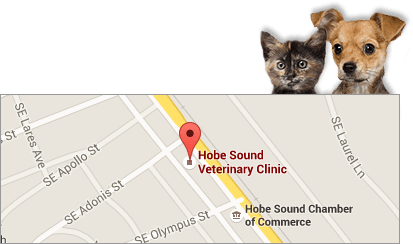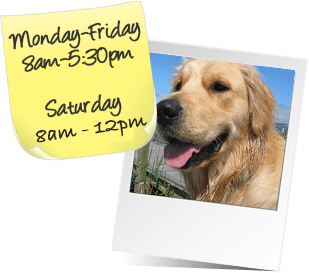Did you know that dogs spend an average of 8 to 14 hours a day sleeping? This leaves plenty of time for activities that keep them healthy and happy. Enter the world of canine enrichment! In this article, we explore various ways to keep your furry friend mentally and physically stimulated. From social interactions and sensory activities to indoor games and puzzle toys, discover practical tips to prevent boredom and enhance your dog’s quality of life. Read on to learn how to tailor enrichment activities to your dog’s unique preferences and needs, ensuring a content and well-rounded companion.
September is Responsible Dog Ownership Month. One thing that is very important to Fido’s health and well-being is providing enrichment. Your furry friend will likely spend between 8 and 14 hours a day sleeping. That still leaves him with at least ten hours a day to fill! A local vet offers some insight on this below.
What Is Canine Enrichment?
Enrichment, in this sense, means keeping Fido active and entertained, and making sure he isn’t getting bored. There are different types of enrichment. Social interactions may mean things like doggy daycare or puppy playdates. Occupational enrichment are things that keep your four-legged friend busy, such as scavenger hunts or teaching your dog to behave in the garden. Nutritional enrichment may entail things like puzzle treats that dispense toys. Sensory enrichment may include things like, well, sniffing lawns. And then there’s physical enrichment, which would entail playing or going for walks or hikes.
What Are Some Indoor Ideas For Enrichment?
Walks are great for enrichment, but if it’s cold or rainy out, a walk in the park isn’t going to be very appealing. You can offer your pooch stimulation indoors. Things like puzzle toys, snuffle mats, and treat-dispensing toys will definitely keep your furry buddy occupied. You can also play Hide And Seek or the Three Cups game. Some pups even like watching TV. Training counts, too!
Why Is Enrichment Important For Dogs?
Our canine companions are quite intelligent, and they can get quite frustrated with nothing to do. Boredom is no fun for anyone! If Fido gets bored, he may try to amuse themselves by engaging in bad behavior, such as digging or chewing. Enrichment is also just important for your furry pal’s mental and emotional health, and his overall quality of life.
Choosing The Right Types Of Enrichment
Every dog is a little different. You may need to experiment a little to find out what your pooch likes best. If you have a scent hound, such as a Beagle, you may find that your canine pal loves scavenger hunts. A sight hound, on the other hand, may prefer playing Fetch. The options may also change as your pup ages. For instance, a senior dog may be better suited to a doggy version of the Three Cups game than a rigorous hike at a park. Ask your vet for specific advice. You may also find doing some breed research is helpful here.
Elevating Canine Enrichment in 2024: Indoor Activities for Mental and Physical Stimulation
What are specific indoor enrichment activities for dogs?
Indoor enrichment activities for dogs can greatly vary to match a pet’s interests and capabilities. Puzzle toys and snuffle mats engage a dog’s problem-solving skills and scent work, which are crucial for mental stimulation. Interactive games like Hide and Seek or the Three Cups game provide both mental and physical engagement. For dogs interested in visuals, television programs designed for canine viewership can capture their attention. Regular training sessions also serve as effective enrichment, keeping a dog’s mind sharp and behavior in check.
What are some DIY enrichment toys and activities?
Enrichment toys and activities are essential for a dog’s mental stimulation and can easily be created at home. For DIY options, consider crafting a snuffle mat using fleece or old towels for scent work, or create puzzle toys by hiding treats in cardboard boxes or under cups in a homemade shell game. Engaging dogs in games like Hide and Seek or setting up obstacle courses with household items also offers great mental and physical exercise. These activities not only prevent boredom but also discourage destructive behavior by keeping dogs mentally sharp and physically active.
What are some specific indoor games to play with your dog?
Indoor games provide essential enrichment for dogs, helping mitigate boredom and prevent undesirable behaviors. Puzzle toys and snuffle mats engage a dog’s problem-solving skills and scent detection abilities, making them excellent choices for indoor activity. Games like Hide and Seek or the Three Cups game stimulate a dog’s mental agility and are fun ways to interact. Additionally, some dogs may enjoy watching television, which can offer visual stimulation, or participating in indoor training exercises, which keep their minds active and reinforce obedience.
How does enrichment benefit a dog’s health?
Enrichment activities are essential for maintaining a dog’s mental, emotional, and physical health. Keeping dogs engaged through social, occupational, nutritional, sensory, and physical enrichment prevents boredom and related negative behaviors like digging or chewing. These activities stimulate a dog’s intellect and cater to their natural instincts, which enhances their overall quality of life. Moreover, regular enrichment can significantly contribute to a dog’s emotional well-being by reducing stress and increasing happiness, leading to a healthier and more balanced life.
How can you balance safety and fun in enrichment activities?
Balancing safety and fun in enrichment activities for dogs involves choosing suitable activities based on their individual needs and monitoring them closely. Select toys that are non-toxic and appropriately sized to prevent choking. Supervise interactive play to ensure it remains safe and enjoyable. Indoor activities like puzzle toys and snuffle mats offer safe options, while outdoor adventures should be in secure areas to prevent accidents. Adjust the intensity and type of activities to your dog’s age and physical condition. Consult a vet for personalized recommendations to ensure both safety and enjoyment in your dog’s enrichment routine.
Do you have questions about your dog’s health or care? We can help! Contact us, your local veterinary clinic in Hobe Sound, today! We offer a range of services to support your pet’s well-being, including pet boarding for times when you need to be away from home.




